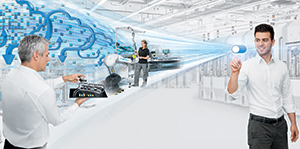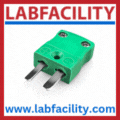
Posted to News on 21st Jun 2021, 00:00
Food for thought
Making a major investment in your business, particularly when it involves transformative technologies, can be daunting. Andy Macpherson, Industry Manager for Food and Beverage at Festo, offers some advice for key decision-makers wishing to implement a smart factory strategy.

Businesses need regular investment to thrive and survive. But budgets are finite and trading conditions are always fluctuating, so deciding where and when to inject the cash is a tough call. This applies in any industry: but within the food and beverage sector, two key drivers are the looming skills shortage, particularly for manual tasks, and the constant pressure to produce high quality, reliable and healthy foods with total traceability.
Automation digitalisation does not just improve production and overall equipment effectiveness (OEE), it also has numerous ways of giving you a good return on investment. All these factors should be considered when making the business case to invest.
Increase uptime: digitalisation reduces unplanned downtime by predicting device failures before they happen. This can save up to 20% in maintenance time as errors are identified faster. It also reduces consequential losses due to unplanned stoppages. With open communication protocols this can also save time installing, commissioning, and adapting production processes. Complex plant is easier to use and can be more easily networked with other equipment.
Improve reliability: digitalisation enables the monitoring of parameters such as vibration, noise, temperature and energy consumption, providing invaluable insights to make your plant more reliable and less costly to run. Production lines can therefore run effortlessly at higher performance levels for longer periods of time with less human interaction.
Optimise production: digitalisation enables continuous improvements that enhance production cycle times, optimising daily output. More accurate and streamlined production results in less wastage, improving the bottom line.
Enhance quality: automation digitalisation reduces human error. Recipes and processes are pre-determined, and processes are monitored as they pass through each stage so that any deviation can be assessed and corrected immediately. The ability to deliver consistent, traceable product is a key success factor for major food retailers and will therefore affect your ability to secure future contracts.
Reduce waste: Using automation digitalisation, product defects can be identified quickly and rectifications made before packaging. Identifying defects early, before value has been added, reduces waste, avoids recalls and maximises profits. Automation digitalisation reduces waste right through to final packaging. What would reducing ‘give away’, eliminating overfill and underfill, by just 1% mean to your bottom line?
Improve agility: automation digitalisation keeps you ahead of your competitors and makes you more responsive to changes in demand. For example, automation digitalisation makes it easier to increase production efficiency, enabling the business to adapt to seasonal demand spikes without the need to buy more processing plant that sits idle out of season. It offers the potential to increase agility to reconfigure processes more quickly and offer flexible ‘individualisation’ of products.
Retain staff: It sounds counter-intuitive, but automation digitalisation provides the opportunity to up-skill your staff. It frees them to learn more value-added tasks, contributing to staff wellbeing and career satisfaction, as well as reducing the exposure to injuries through repetitive movements, or inattention due to boredom. Engaged and motivated employees are an invaluable business asset.
Adopting automation digitalisation
One of the most common barriers to adoption of the smart factory approach is based on the misconception that ‘we can’t afford a new factory’. You don’t need to build a new factory to start investing in – and benefiting from – automation. Upgrading existing machinery is an affordable and manageable place to start. By automating one production line, you begin to collect data and insights on achieveable, tangible results: for instance identifying where process improvements can be made and replicated on other lines.Wherever you chose to start, be clear about why you are implementing a more automated approach. Are you solving a particular problem, or making the most of new opportunities? And who is driving the project – is it a bottom-up or a top-down process?
It’s important to start the process with proof of concepts, pilots, easily-understood projects that can be scaled up when proven. Taking a step-by-step approach ensures factors such as networking, machine-to-machine communications and integration with legacy systems are considered and addressed in a timely and cost-effective way.
Phased adoption enables you to take your people with you: many an investment in technology can be negated by resistance from colleagues and employees who do not fully understand the benefits or the overall vision. The smart factory journey is best achieved when the entire organisation has the knowledge and confidence to implement the necessary changes.
With the team fully on board, ensure all elements are in place before committing resources. Applying digital twin simulations to model production line changes ensures the changes will work before interrupting production.
Final thoughts
Food processors should not wait until they are building a new facility to implement automation digitalisation. The benefits of adoption in terms of process improvements, return on investment and the ability to be more responsive to market fluctuations are compelling.
However, there are a number of factors to consider in order to ensure that investment is successful. These include having a clear vision and purpose, communicating that vision to the team, and sense-checking that the proposed investment will achieve the desired outcomes. By following these steps, decision-makers can be assured that their automation strategy will be a lasting legacy, delivering all the benefits of a smart factory and giving their business a competitive advantage.
Automation specialists such as Festo are on hand to offer expert advice and provide the support that business leaders require.





